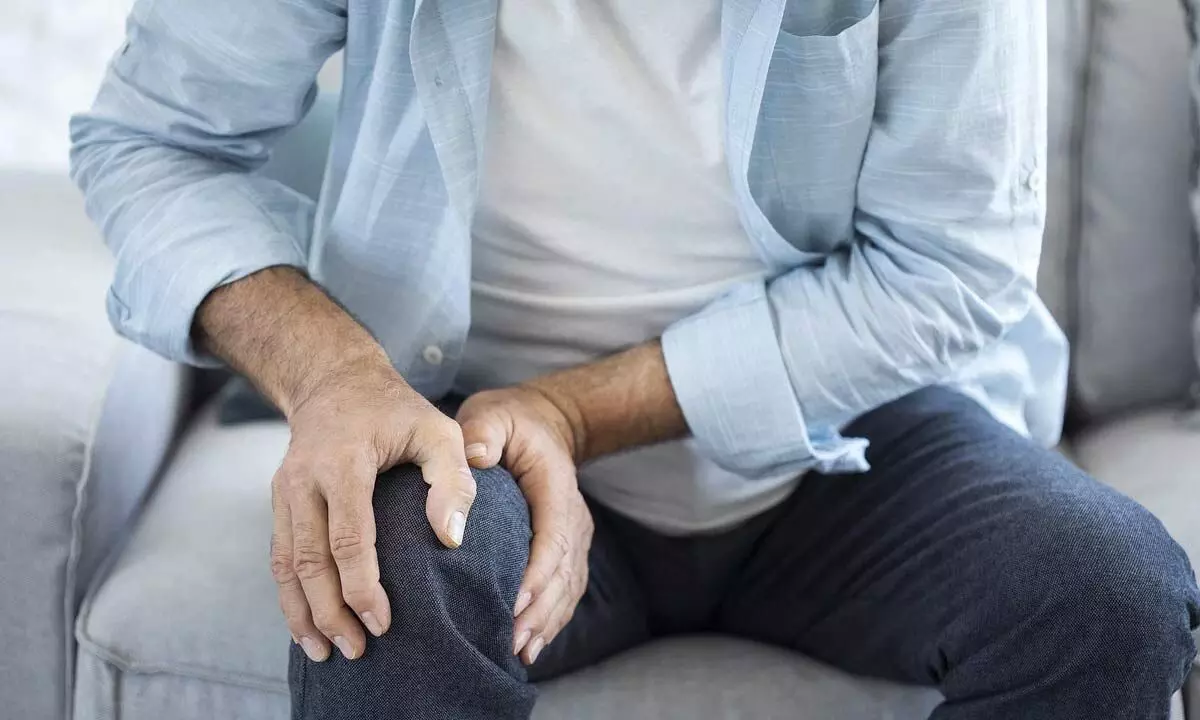Live
- Passengers unhappy over insufficient bus services
- Samagra Shiksha, Bal Raksha Bharat launch new edu project
- Sarithamma inaugurates cricket tourney
- Gaiety, religious fervour mark Vaikunta Ekadasi at Tirumala
- Realty boost: Norms eased for building, layout permissions
- AGPL bags environmental champion award
- Pawan demands apology from TTD chief, members
- Temples see huge rush on Ekadasi
- CP presents Chader at Urs celebration
- Books are windows to a wonder world
Just In
How to treat arthritis pain during winters?


How to treat arthritis pain during winters?
As we all know, arthritis is a joint condition that is inflammatory.
As we all know, arthritis is a joint condition that is inflammatory. The inflammation of the joint limits the range of motion of the afflicted joint. The onset of symptoms can be sudden or gradual, depending on the kind and stage of arthritis.
Winter is anything but a wintry wonderland for people with arthritis. It is much more challenging to control arthritic pain in the winter. The sudden drop in barometric pressure caused by the change in ambient temperature causes joints to expand. These conditions exacerbate the pain caused by various arthritic conditions.
"Yes, those with arthritis are harder hit by these chilly waves. As the temperature drops, the capillaries narrow, causing stiffness, joint swelling, and weariness. Additionally, their joints respond to an accumulation of pro-inflammatory chemicals, which complicates the situation" said Dr Rahul Grover, Consultant Orthopaedic Surgeon, Founder and Director at Glyra Orthopaedics, New Delhi
The following are a few causes of arthritis flare-ups in the winter:
l Wintertime increases the sensitivity of the pain receptors.
l Joint discomfort results from the air pressure dropping. When pressure drops, tissues swell, causing tension to accumulate between joints and discomfort.
l Colder temperatures cause greater muscular spasms, which exacerbates joint pain and stiffness.
l The cold decreases blood flow to the hands and feet, intensifying arthritic discomfort.
l Vitamin D levels drop throughout the winter months due to less sunlight, which also causes weakening bones and joints.
Below are some helpful tips you can use to lessen the pain you feel in the winter, explains Dr. Rahul Grover:
The key to joint pain relief is staying warm
It is obvious that staying indoors in an environment with proper temperature control is the best method to prevent the cold. However, layering warm clothing made of quick-drying fabrics like wool is one of the greatest strategies to prevent cold weather aches and pains if you must go outside. Wearing long underwear could also help keep your lower extremities warm if you have arthritis in your hips or knees. Keep your feet and hands warm as well! Extra warm socks and a nice pair of insulated gloves can be helpful. You can also spend some time in a warm bath if you arrive home with joint ache from the cold.
Remain active and preferably indoors
One of the finest things you can do to prevent arthritis discomfort is exercise. Additionally, it's a fantastic approach to enhance your general wellness. Regular exercise helps to increase muscle strength, flexibility, and energy levels, all of which can assist to lessen joint discomfort. Your joints will be least stressed by low impact exercises. Excellent choices include:
l Yoga
l Elliptical trainers or indoor cycling machines
l Aerobics
l Strength training
l Walk or run on treadmills or cushioned indoor tracks
If you've never exercised before, Dr. Rahul Grover recommends that you should start off slowly. Start out by exercising for about 2 to 10 minutes twice daily. Rest well in between workouts. You can lengthen and intensify your workouts as you become more accustomed to your new pursuits
Don compression gear
For years, compression clothing such as arm sleeves, gloves, and socks has helped to ease joint pain. These things aid in boosting circulation, which has been proved to alleviate arthritis discomfort. Compression clothing can trap heat, acting as an additional layer to keep your hands and legs warm throughout the harsh winter months.
According to Dr Rahul Grover "Adults should consume between 20 and 50 ng/mL of vitamin D daily. Consume meals high in omega-3 fatty acids, which are rich in vitamin D, such as salmon or mackerel. There are several items on the market that have been fortified with omega-3 fatty acids and vitamin D, such as milk and cereals. To enhance your consumption, you can also take fish oil and vitamin D pills. In fact, a teaspoon of cod liver oil can supply all of your daily needs for vitamin D".
Keep a healthy weight
You'll probably experience more pain the more strain you put on your joints. Your joints will experience less pain as a result of your healthy weight maintenance because it puts less strain on them.
According to studies, brown adipose tissue, which emits pro-inflammatory chemicals that might harm joints, is more common in individuals with high body mass indices (BMIs).
Additionally, autoimmune disorders like rheumatoid and psoriatic arthritis can be brought on by inflammation. Additionally, obesity has been associated with a rise in knee arthritis cases.
The greatest strategies to maintain a healthy weight are through a nutritious diet and an active lifestyle.
(The author is a Consultant Orthopedic Surgeon, Founder and Director at Glyra Orthopedics)

© 2025 Hyderabad Media House Limited/The Hans India. All rights reserved. Powered by hocalwire.com






